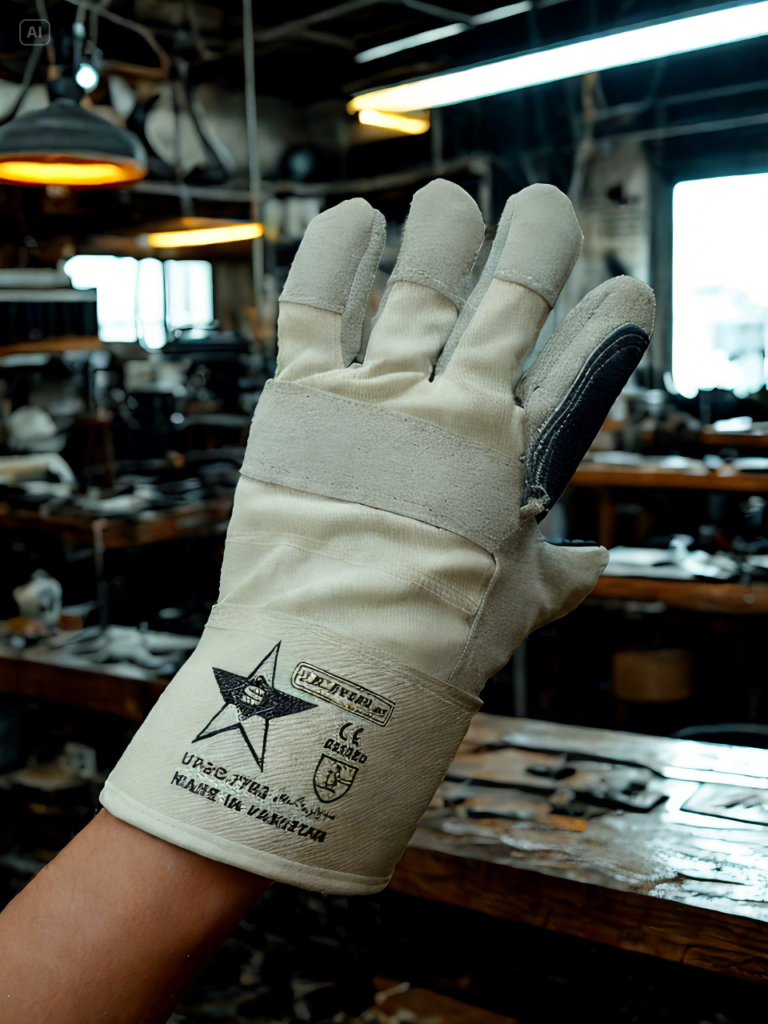Meta Description:
Discover the latest breakthroughs in leather glove manufacturing from smart textiles to ergonomic designs, learn how innovation is reshaping protection, comfort, and performance in industrial gloves.
Future-Proof Protection: Innovations in Leather Glove Technology
In today’s fast-paced industrial landscape, safety standards are constantly evolving. Accordingly, so are the tools used to meet them especially gloves. While leather gloves have long been a trusted option for protection, recent innovations are transforming their design, functionality, and performance. In this blog, we’ll explore the most cutting-edge developments in leather glove technology and how these updates are setting new standards for worker safety.

Advanced Material Blends for Extra Durability
Traditionally, manufacturers made leather gloves from cowhide, goatskin, or pigskin. However, modern glove makers now incorporate hybrid blends that combine natural leather with advanced synthetic linings. As a result, they have achieved improved resistance to cuts, chemicals, and abrasion without sacrificing comfort. In many products, they layer Kevlar® or Nomex® fibers underneath leather to increase strength and flame resistance.
Smart Glove Integration
Moreover, tech-driven enhancements are entering the leather glove market. Some new models incorporate sensors that monitor hand movement, pressure, or heat exposure in real time. Workers use these smart gloves in high-risk environments such as oil rigs and manufacturing lines. The gloves provide feedback data that helps prevent injuries and reduce downtime.
Ergonomic & 3D Design Enhancements
To improve long-term wearability, ergonomically designed gloves are gaining popularity. This ensures better grip and less hand fatigue, especially during extended use. Furthermore, elastic cuffs and breathable inserts have been added for greater flexibility.
Thermal and Chemical Resistance Upgrades
Recent innovations have also focused on improving heat and chemical resistance. For instance, leather gloves now undergo advanced tanning and coating processes that make them resistant to hazardous liquids and extreme temperatures. Consequently, industries like foundries, metalworking, and chemical handling are benefiting from improved safety and reliability.
Sustainable Leather Processing
In addition to performance upgrades, sustainability has also become a key priority. New eco-friendly tanning methods which use fewer harsh chemicals have been adopted. Furthermore, companies are increasingly recycling and repurposing leather waste into industrial rags, padding, or secondary products, making the entire lifecycle more environmentally responsible.
Final Thoughts: Innovation Is Here to Stay
Ultimately, leather gloves are no longer limited to basic protection. With the integration of smart technology, sustainable practices, and high-performance design elements, manufacturers have evolved them into essential safety tools for a wide range of industries. As innovation continues, developers are expected to introduce even more advanced features that will keep workers safer and more efficient than ever before.
